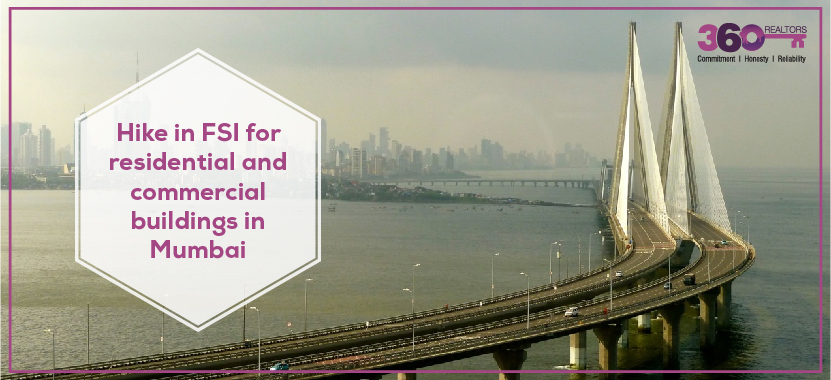The Maharashtra government has approved the Mumbai Development Plan 2034, where the authorities have agreed to increase the floor space index in residential and commercial properties. This move will benefit the developers and the real estate industry is likely to get a boost. Previously, the FSI in Island City was 1.33 in both residential and commercial properties. According to the revised figures, the FSI in residential buildings has been fixed at 3 and that in commercial buildings has been fixed at 5.
In the suburban areas, the FSI in residential buildings was 2 and that in commercial buildings was 2.5. These figures have been increased to 2.5 and 5, respectively.
FSI, or floor space index, refers to the ration of the total space to the built-up area. When the FSI is higher, it indicates that the developers can utilize the space in a given plot in a better way. In simple words, they will have more space to develop the building. Usually, this addition of space is done by increasing the number of floors. Mumbai is presently the home to about 2 crore people and it is the second-most crowded city in the world. The utility of vertical space will enable the residents to get the desired space.
For a long time, a greater FSI had been in demand in the industry. Certain developers had focussed on the importance of increasing the FSI universally, instead of simply increasing it in the IT parks, or redevelopment of hotels or slum rehabilitation. The real estate companies in Mumbai are happy with the outcome, as they can now make better use of the space in the plots. People willing to sell large plots of land can benefit a lot, as the FSI in these segments have increased and the value has also risen, correspondingly.
An important aspect to note, FSI is not related to the width of the road. Previously, this feature was absent in the prevailing norms. Higher width of roads indicates a greater FSI. However, the high-rises are more likely to come up in the island city than the suburban areas. This development depends on the existing infrastructure to a great extent. Now, a direct correlation exists between the width of the roads and the prices of property.
However, certain challenges are to be dealt with care in the process. Most of the real estate companies have welcomed the move. A certain segment of the experts reveals that although the strategy will result in better space utility, it will have little effect on reducing the cost of properties. The input costs for developing these projects are likely to remain the same. Therefore, the cost of residential and commercial properties in the urban and suburban areas may not be decreased. The cost of property in Mumbai has been increasing over the years. In order to keep these costs within the affordability of the homeowners, it is important to reduce the input cost. Increasing the FSI is not likely to lead to any such outcome, according to experts.
You can have a look at the upcoming residential and commercial projects in Mumbai and make your purchase.






